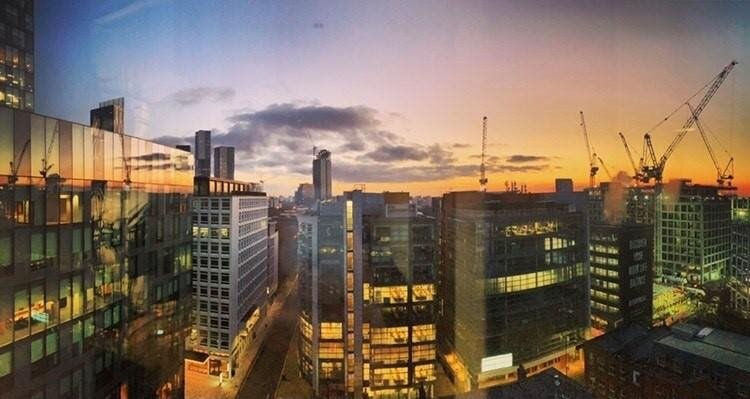The Manchester Cladiators - the Truth Behind the Cladding Scandal
In this piece, Manchester Girl, Amy, discusses the Manchester Cladiators - Four Years after Grenfell.
Amy Walker via Instagram
72 people devastatingly lost their lives in the Grenfell disaster of 2017. The heartbreaking tragedy revealed two things. Firstly, that the building was wrapped in a highly dangerous, flammable material which allowed the flames to engulf the building at catastrophic speed.
And secondly, that despite the known risks - this cladding is commonly used, with over 44% of the UK’s high-rise buildings being coated in it.
Stephanie Barwise QC speaking at the Grenfell Enquiry states that the cladding and insulation found on Grenfell was:
“[more flammable] than dropping a match into a barrel of petrol”.
In light of the tragedy, the government called for the countries’ high-rise buildings to be safety tested.
Their findings exposed countless buildings with appalling fire safety defects - wrapped in the same flammable materials used on Grenfell, and in some cases, worse.
It’s been measured that most high-rise buildings built within the last 15 years present a risk to human life. These include hospitals, care homes, hotels, offices, and residential properties.
Decades worth of inadequate building safety standards and failed government regulation have been uncovered – and the risks are impossible to ignore.
It is estimated that a staggering £15 billion is needed to make all buildings safe. Due to the draconian Leasehold system in most multi-occupancy buildings, these extortionate costs are being passed to the innocent residents of the flats in the form of a “service charge”.
These costs vary from £15,000 up to over £100,000 each.
These properties aren't mansions. They are modest homes bought by your everyday, hard-working person, like you or me. People who will have struggled to save for years to get onto the property ladder are being forced to pay tens of thousands to fix the building industry’s mistakes.
A group of affected residents in Manchester first formed The Manchester Cladiators in 2019, and have been tirelessly fighting for justice ever since. The movement has grown from a small group of leaseholders in Manchester, to thousands around the country - and counting.
The work poured into the campaign by hard-working people is truly inspiring. They’ve teamed with action groups such as Grenfell United, they’ve protested at Whitehall, they’ve established initiatives to support residents' mental health and they’ve gained cross party support from MPs around the country.
From investigating and raising awareness - to lobbying and gaining £5 billion of government funding, they've gained extensive coverage in the media and support from influential spokespersons, and are regularly discussed in parliamentary debates and national news.
And yet? They are trapped. Their bills are landing. They are going bankrupt, and are starting to lose their homes.
“If you bought a faulty car that was a risk to human life it would be recalled by the manufacturer. You wouldn’t be forced to pay to have the car fixed - it wouldn’t happen. So why should it happen to people’s homes?”
Why is this happening? How can the government allow this? How can the builders and developers get away with it? Surely residents can claim on insurance?
These are all questions that were explored in the wake of the crisis and the findings are; no one will take responsibility.
Insurance companies have hiked their premiums by a whopping 2000% to profit from the crisis. And, you guessed it, these costs are unabashedly passed down to the leaseholder.
Builders, freeholders and construction companies are hiding behind and abusing a clause which states that the leaseholder is liable to pay for ‘upkeep’ of communal areas of the building. This clause is being used to pass all remediation of defects and interim costs to the residents.
Leaseholders can’t re-mortgage or sell, as their properties stand as worthless. Sales are falling through, and the property market is stalling.
Four years after Grenfell it’s estimated that millions of people are trapped by this crisis. One resident, Hayley Tillotson had to declare bankruptcy at age 28.
“My dream flat turned into a nightmare”
The government has acknowledged the unjust and futile situation leaseholders find themselves in. Yet, they refuse to change the law to protect leaseholders from unfair costs. Nor have they made those responsible face accountability, or provided a solution to the ongoing threat and crisis.
Recently, the government set aside £5 billion to help with remediation costs and presented this to the general public as ‘a solution’ to the cladding scandal.
The reality? The sum isn’t enough to solve the crisis. With added VAT, the government will make the amount back, still leaving leaseholders to foot the bill.
The government’s ‘solution’ is staged for political effect, and doesn’t even scratch the surface.It merely allows those responsible to escape accountability, and leaves leaseholders in an impossible situation. For many, financial ruin is imminent.
The Solution
It has been tabled by experts that the issue is so huge, that only the government would be capable of overseeing and implementing a full solution.
A task force would be required to measure the buildings most at risk. The government would need to provide enough funds to make all homes safe, full stop, and would need to introduce a levy on the developers at fault to cover 100% of the costs.
This means that people could be safe in their homes, the taxpayer will no longer pay for industry mistakes, and the perpetrators will face accountability.
What can you do to help?
If this story has ignited a fire inside of you; tell your friends, your family, your colleagues, your bus stop buddies - tell everyone and shout it from the rooftops!
Raise awareness of the impact, and educate people about the injustices facing first-time buyers, families and retirees - and how it’s stalling the housing market.
If you have five minutes to spare, write to your MP and ask them to support the Ten Steps to End the Cladding Scandal.
Follow the Manchester Cladiators on Twitter and Instagram. Read their compelling story on their website and share it far and wide.
If anything has become apparent through the ferocity of this campaign so far, it is that to gain any justice at all, it will be through the togetherness and the power of the people.
*Most high-rise buildings are residential flats which are bought under leasehold. Leasehold is when a flat is owned by a resident in a multi occupied building, but the building is owned separately by the freeholder. Any remediation costs for the upkeep of communal areas such as lobbies or gardens is passed down to the leaseholders as a service charge. Typically, these costs can range from £50 to £200 per month in a modest 1-3 bedroom flat.
Help us keep the City Girl Network running by supporting us via Patreon for the price of a cheap cup of coffee - just £2 a month. For £3 a month you can also get yourself a Patreon exclusive 10% off any of our ticketed events! You can also support us by following us on Instagram, and by joining our City Girl Network (city wide!) Facebook group.
Written by Amy Walker












